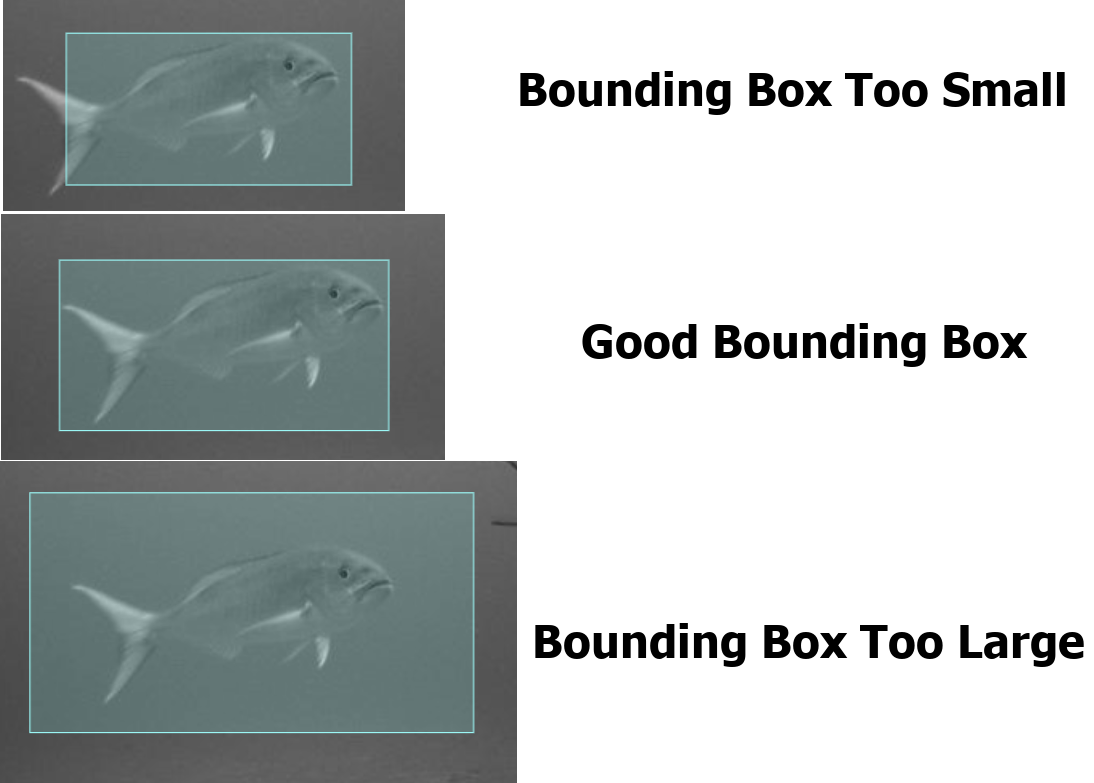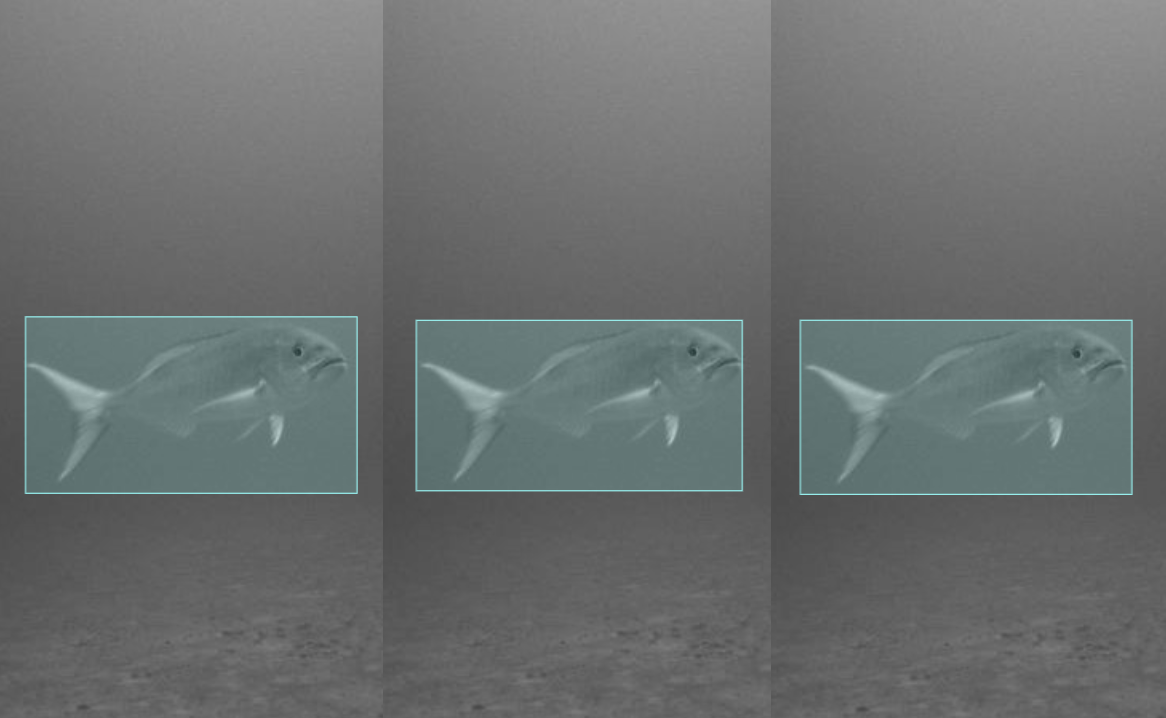6. Annotation Best Practices#
Label consistency.
All instances of all classes in all images must be labelled.
Partial labelling will impact performance.
Label accuracy.
Ensure tight and consistent bounding boxes.
Labels must closely enclose each object.
No space should exist between an object, and it’s bounding box.
No objects should be missing a label.

7. Precision & Accuracy#
Precision indicates the consistency of annotations
Accuracy refers to how close the annotated data is to the true values
7.1. Example: Initially looks the same#

7.2. Zoom to see the difference in Accuracy#

High accuracy and precision lead to better-trained models by reducing noise
7.3. What about Partially Visible (Occluded) Objects (like urchins)?#
Two main approaches. No right or wrong answer.
Experimentation and then consistency is key.
Estimate and draw full bounding boxes (for full object learning)
pro: helpful for other downstream opencv tasks like segmenation and sizing techniques
con: subjective and time consuming.
Suggestion: If full object learning is important, try instance segmentation instead
Or Draw Bounding box only around the visible portion (recommeneded)
pro: grounded in what is actually visable
cons: inconsistent box sizes. postential for more false postives/negatives
Important Dataset Note:
For this techinque, ensure a good balance of fully visible and partially occluded objects in final training dataset
7.3.1. Example Annotation Flow for Occluded Objects:#
Fully visible:
Draw a tight bounding box around the entire object.
Partially Visable:
Draw a box around just the exposed portion
Mostly covered:
If confident annotate it.
But if unsure, just skip it.
